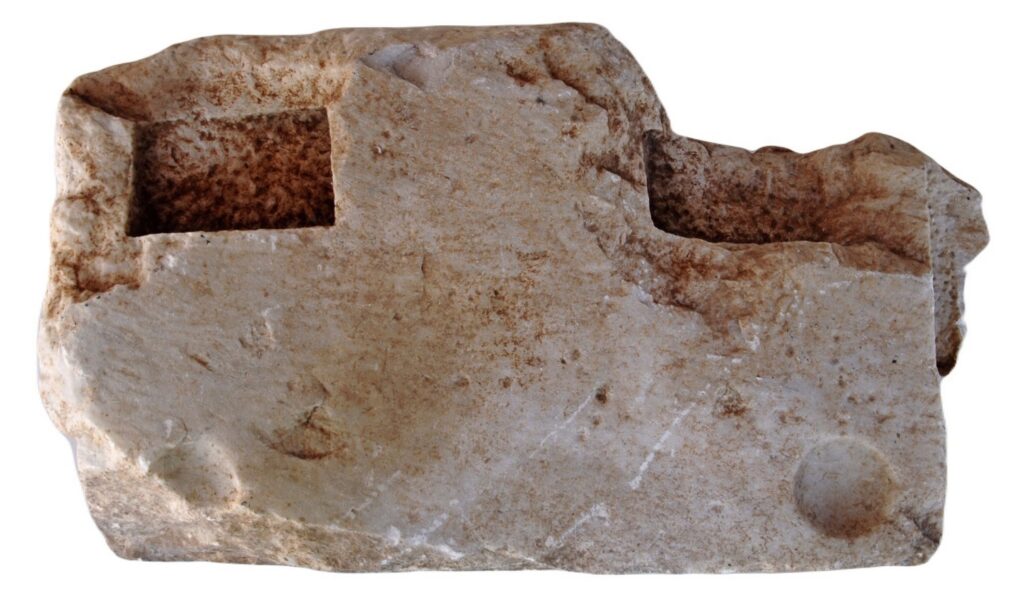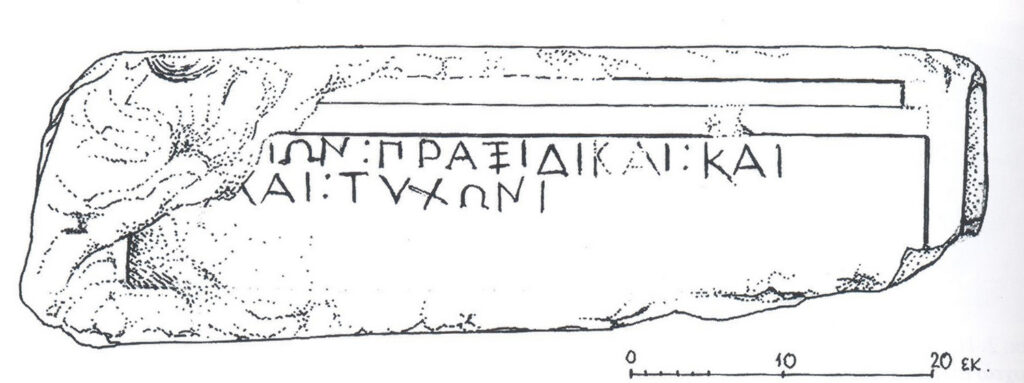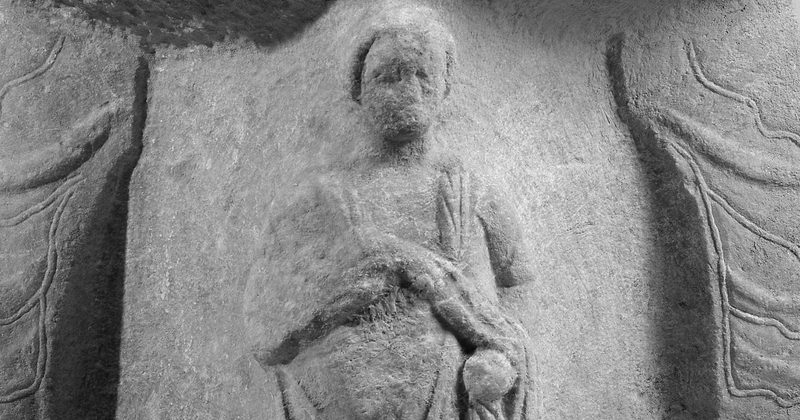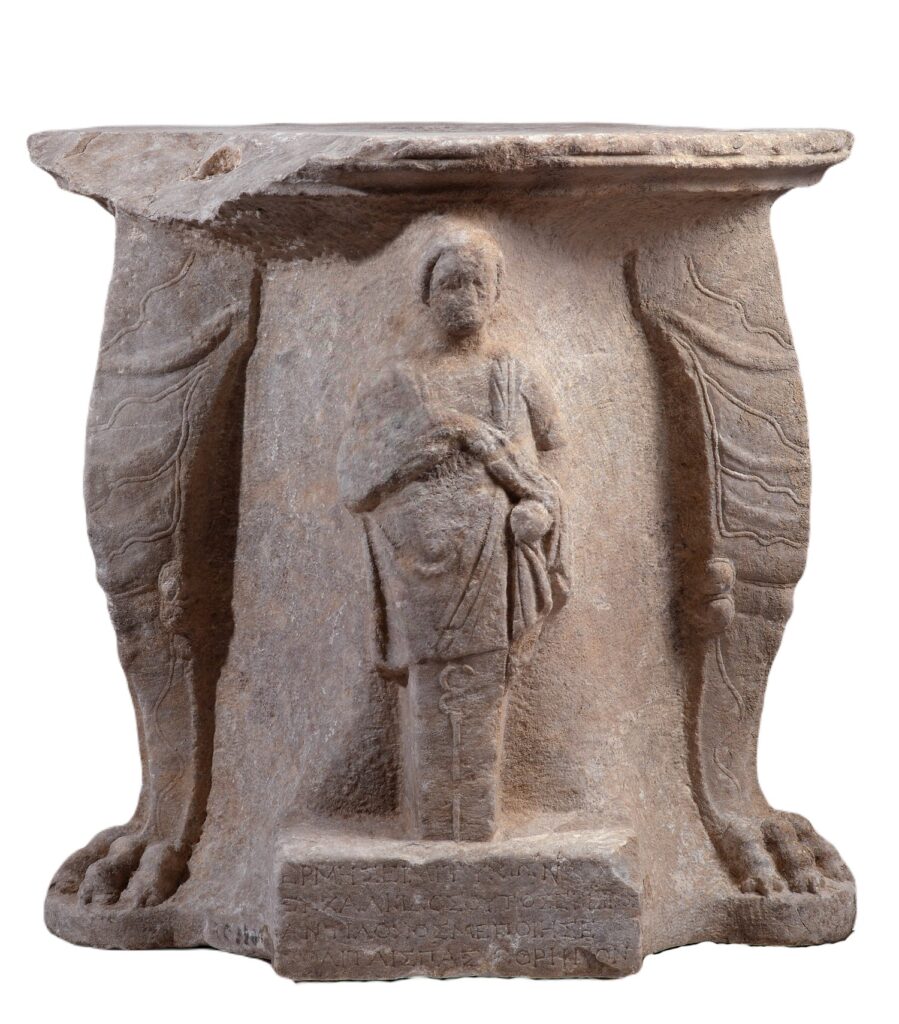In the Archaeological Museum of Dion is kept the fragmentary marble base of a votive offering (Dion Museum inv. no. 8013), which is interesting for its form and the inscription it bears.

On the front side, relief horizontal and vertical fillets give the base the shape of a table (Fig. 1). On the upper surface there are two circular, shallow, and smooth cavities, 6.5 cm in diameter, and behind them two rectangular cavities, measuring 14 x 8 cm and 12 x 7 cm and 4.9 cm deep (Fig. 2). The form and the processing of the rectangular cavities show that pillar-like elements were fixed in them.

A two-line votive inscription is partially preserved below the second horizontal relief fillet of the front side. One can read the names of two deities, Praxidika and Hermes Tychon, in dative.
] ΙΩΝ ΠΡΑΞΙΔΙΚΑΙ : ΚΑΙ
]ΑΙ : ΤΥΧΩΝΙ.
The inscription is written in the Doric dialect and follows the eastern Ionic alphabet. The beginning of both lines is missing; in the first line the name of the donor precedes, i.e., a male name ending in ION. The letters AI, surviving at the beginning of the second line, belong to the name of Hermes Tychon ([EΡM]AI TΥΧΩNI) (Fig. 3). Letterforms date back to the 4th c. BC.

Both deities are mentioned for the first time in Dion. Praxidike (doric Praxidika) is a minor deity, known mainly from the ancient Greek literature and from katadesmoi, i.e., lead tablets with curses (arai) written on them. In the Orphic hymn Praxidike is an epithet of Persephone. The name also exists in the plural form. The Praxidicae (Praxidikai) demand and deliver justice and punish the oath breakers. An interesting information is that Praxidike is depicted as a head.
The second deity is Hermes Tychon who “incorporates” Tychon, a lesser god related to luck “(tyche”) and usually found as an epithet of either Hermes or Priapus.
Hermes Tychon is also attested in the Magnesia on the Meander. A relief beardless hermaic stele is depicted between the two legs of a tripod table that was found there. A relief caduceus below the herm identifies the figure (Fig.4). On the base of the herm there is an epigram, in which Hermes Tychon addresses the viewers in the first person. It is noteworthy that in both Dion and Magnesia the name of the god was preserved on a monument in the form of an offerings table.
Given what we have already presented, we can assume that small hermaic steles or busts of the two gods were fixed in the rectangular cavities of the table from Dion, and that the circular, shallow cavities were intended for seeds and incense offerings.
Basic bibliography:
S. Pingiatoglou, “A new votive inscription from Dion”, in Namata. Honorary volume to Professor Demetrios Pandermalis (in Greek), Thessaloniniki 2011, 197-206.


